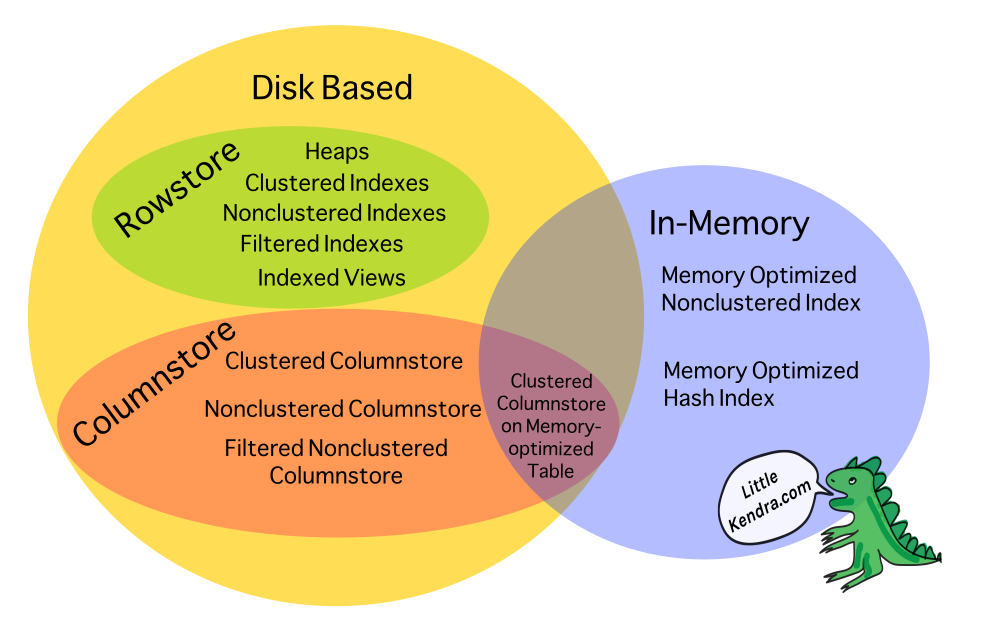Index Bloat in Postgres: Why It Matters, How to Identify, How to Resolve
Index bloat in Postgres can cause problems, but it’s easy to miss.
I’ve written about how vacuum problems can prevent PostgreSQL from …
Read MoreI was looking through some terms in SQL Server documentation the other day, thinking about what it’s like to learn about SQL Server’s indexes when you’re new to the field. I jotted down a note: B-tree = Rowstore = Disk Based.
And then I realized that’s not quite right.
Not all disk based indexes are traditional clustered and nonclustered indexes. Columnstore indexes are also disk based. Updatable Columnstore indexes use special rowstore B-trees behind the scenes. And Books Online says “rowstore” also refers to Memory-Optimized tables.
Here’s a drawing that maps out what is disk based vs in-memory, followed by a list with links to some of the details.

Venn diagram or practical joke? You decide!
Notes on mixing and matching disk based rowstore and columnstore technologies…
For durable in-memory tables, data is written to data and delta files so it’s not lost when the database goes offline. This is very different from “disk based” tables because user transactions do NOT read from the data and delta files. Read more here.
Copyright (c) 2025, Catalyze SQL, LLC; all rights reserved. Opinions expressed on this site are solely those of Kendra Little of Catalyze SQL, LLC. Content policy: Short excerpts of blog posts (3 sentences) may be republished, but longer excerpts and artwork cannot be shared without explicit permission.